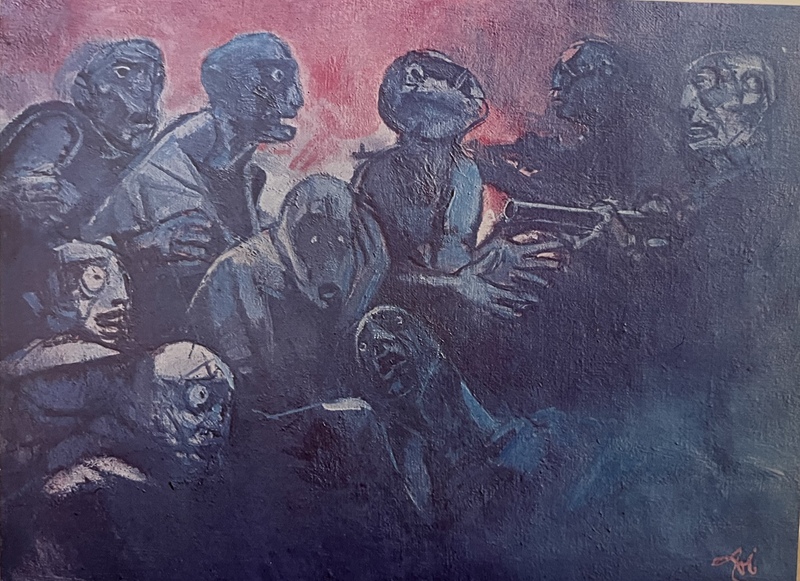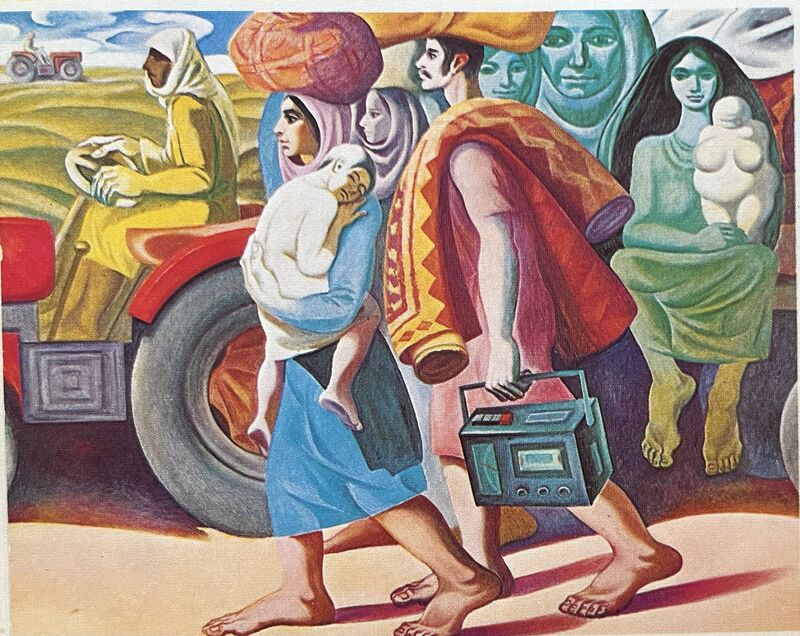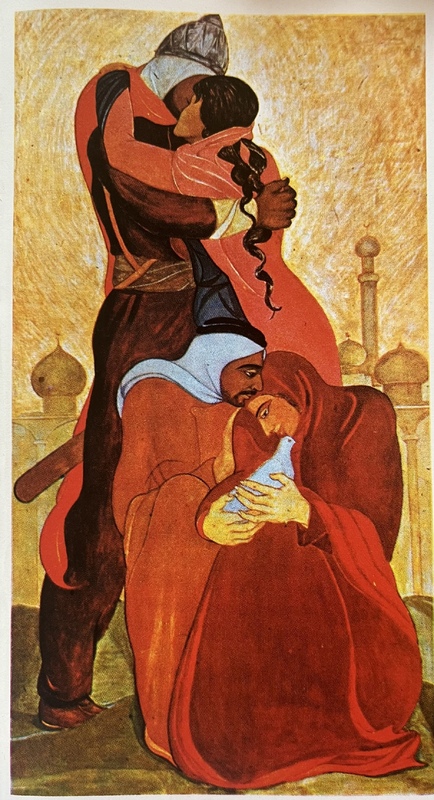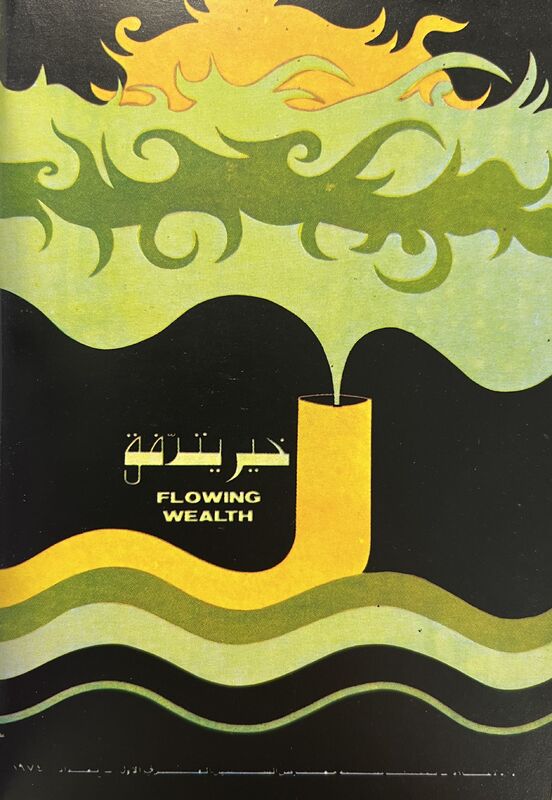Across Ethnic Lines
The diversity of painting techniques in the book is matched by the diversity of Iraqis represented, demonstrating the positive attitudes towards ethnic diversity in early socialist Iraq. Iraq Contemporary Art features notable women, Kurd, Mandean, and Chaldean artists beside their male, Arab-Muslim colleagues. This diversity signifies the collections’ goals: to maintain a working database of all Iraq’s great painters. Following the socialist revolution, Iraqi art students were sent to study abroad in places like Paris, London, and the Soviet Union. After achieving their degrees, the artists would return to teach the next cohort of Iraqi students. This strategy was successful in nurturing a self-sustaining higher education across all disciplines in Iraq.
This oil painting features shades of blue, pink, and purple that stain figures whose faces are contorted into various expressions of horror. Emerging from the dark, a figure on the right points a gun towards the others who return panicked eyes and agape mouths. The figure closest to the aggressor’s gun poses their hands with open palms, a pleading gesture. From the scene and the time period, we speculate a depiction of an Iraqi confrontation against British-Indian imperial soldiers.
The painting’s artist, Faiq Hassan (1914-1992), was Iraq’s most influential 20th century artist. He is featured in this volume as a pioneer of the Iraqi art identity. Hassan began as a child prodigy who later founded and participated in various artist’s groups, including the Pioneers Group. Due to his role establishing the Department of Painting in the Fine Arts Institute of Baghdad in 1939 and the large number of students he taught, he is credited with producing Iraq’s formative generation of modern artists.
This bright, colorful mural depicts a young family trekking down the road, amidst change and transition. They wear traditional rural attire; the mother carries a sleeping child and a bag on her head; the father, a radio in his left hand and rugs over his shoulder. With tractors on a field to their left and a woman holding an ancient Mesopotamian fertility statue behind them, the scene depicts rural Iraqis heading towards a technological future.
The painting’s artist, Mahoud Ahmed (1940-2021) was considered a great Iraqi painter by the time of his death. Categorized by the collection as another pioneer of Iraqi art, he specialized in folkloric and popular styles, focusing on depictions of Iraqi rural traditions following the fall of the British empire. Ahmed taught at the Baghdad Fine Arts Institute and trained students in mural painting.
Two sets of men and women are staged in this vertical piece; the couple kneeling in the foreground lean into each other, gazing at the dove resting in their hands. Both wear traditional robes and headdresses. In the midground, a man and woman stand in embrace; the man wears a historical military uniform and the woman wears a long red dress, dark hair exposed by her fallen veil. In the background, domed architecture and pillars cut across a yellow sky.
The painting’s artist, Modernist Mouhammed Arif (1937-2009), took inspiration for his paintings from his childhood in the semi-autonomous Kurdish region of Iraq. Well-known for his distinct color palettes, he is credited with incorporating both Kurdish and Islamic aesthetics into his work. He taught color in the Baghdad Fine Arts Institute before relocating to the Soviet Union during the Ba’athi Regime.
The final chapter of the Iraq Contemporary Art volume shows political posters with bold graphic design, such as this poster with an image evoking an oil spout coming out of an abstracted Iraqi flag. The phrase “Flowing Wealth” is written in Arabic and in English. The piece, commissioned by the government for the First Biennale of Arab Art in 1974, refers to the nationalization of Iraqi oil and hope for shared prosperity. The Iraqi government, among other Arab nations, commissioned Iraqi artists to produce political art representing Arab nationalism, Palestinian sympathy, and cultural heritage. Although commissions were not limited to political messages, these posters were displayed in formal events beginning in 1970 and garnered much attention across the Arab World.
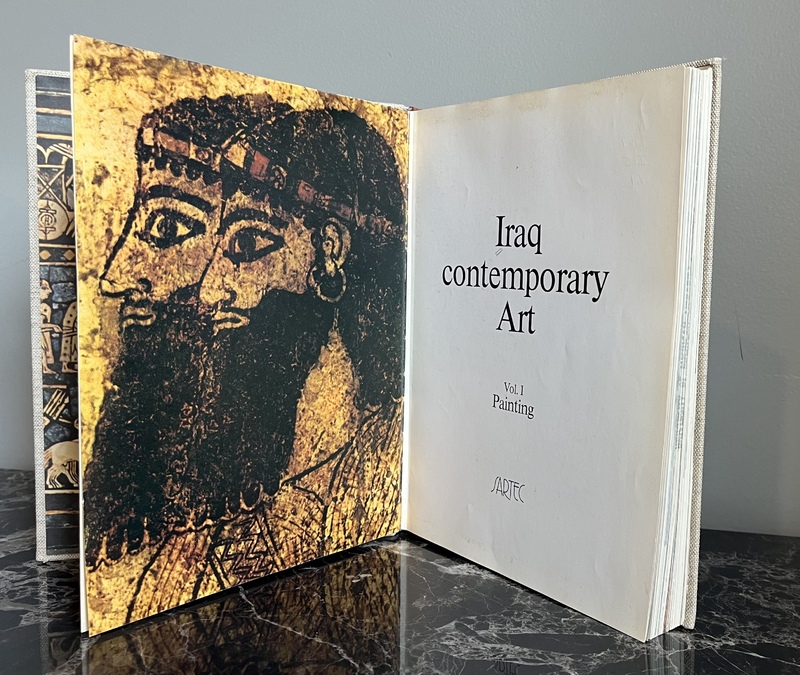
Art as a Public Project
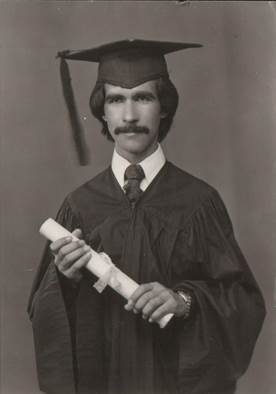
An Iraqi Artist’s Legacy

